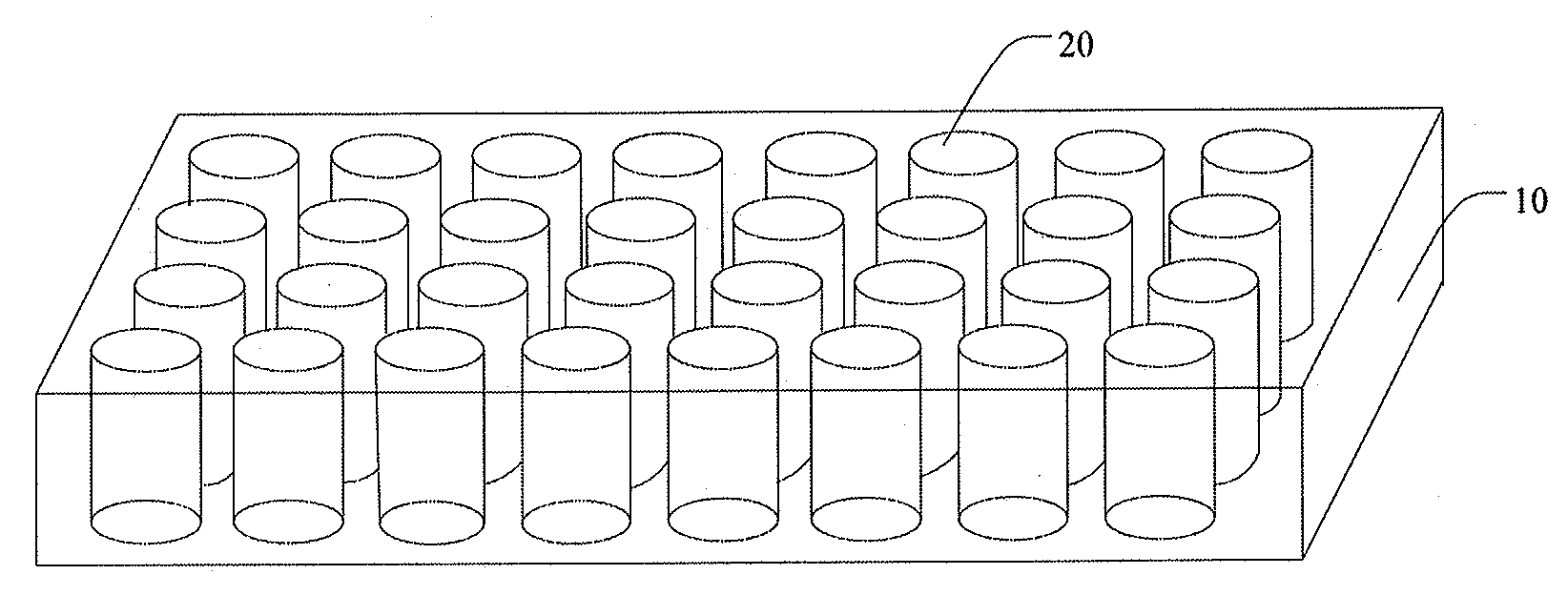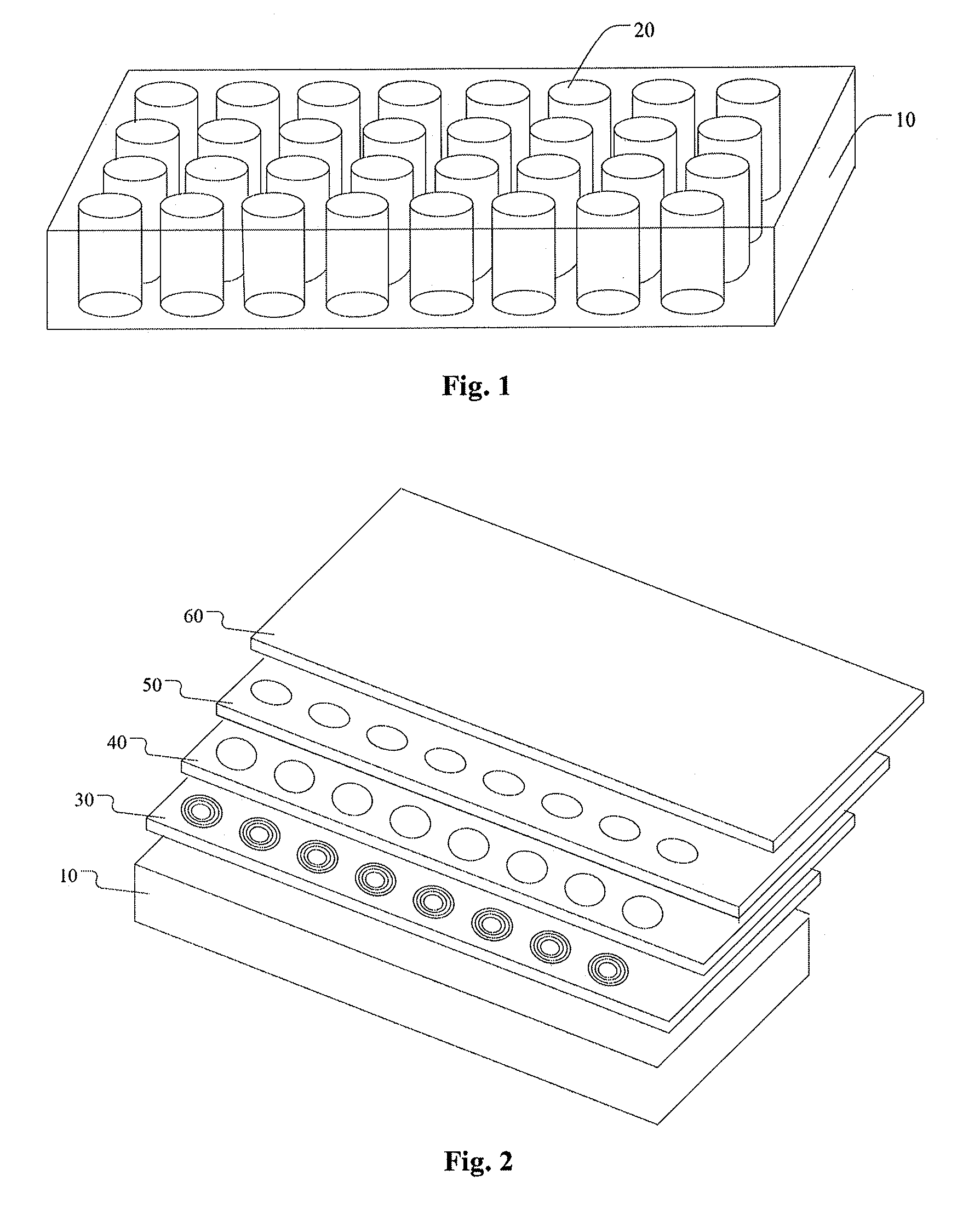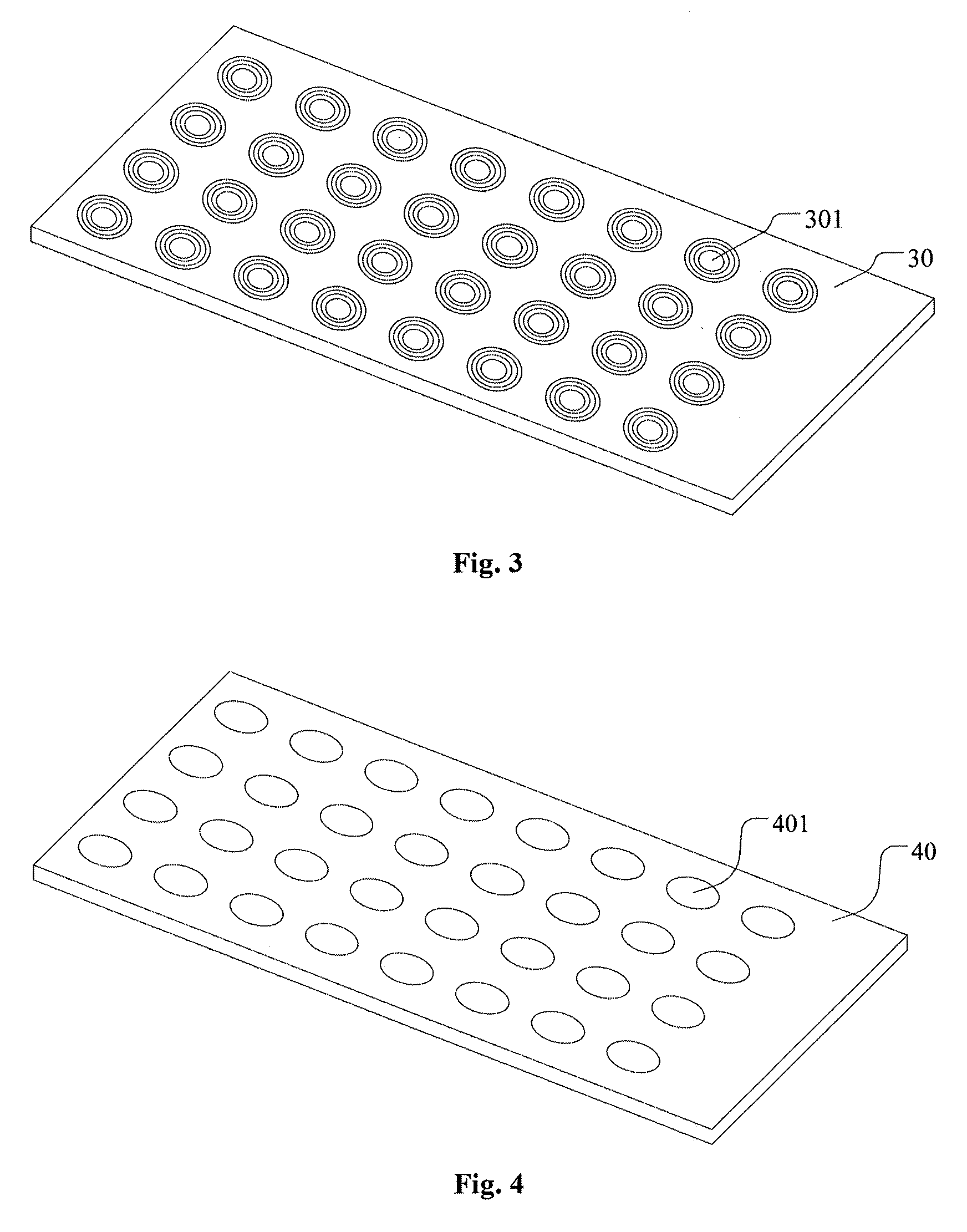Battery pack assembly
- Summary
- Abstract
- Description
- Claims
- Application Information
AI Technical Summary
Benefits of technology
Problems solved by technology
Method used
Image
Examples
first embodiment
[0040]FIG. 2 illustrates a perspective exploded view of a battery pack assembly according to the present invention. The battery pack assembly comprises: the caddy 10, the battery cells 20 (not shown in FIG. 2), a soft and malleable pad 30, a plastic cell lattice 40, a Printed Circuit Board 50, a lid 60 and a plurality of ultrasonic wire or ribbon bonds 70. As shown in FIG. 2, the caddy 10 retains the battery cells 20; the soft and malleable pad 30 is set on the top of battery cells 20; the plastic cell lattice 40 is set on the top of the soft and malleable pad 30; the Printed Circuit Board 50 is set on the caddy 10 and on the top of the plastic cell lattice 40; the lid 60 is mounted on the caddy 10 and is adapted for sealing the caddy 10; the plurality of ultrasonic wire or ribbon bonds 70 (shown in FIGS. 6 and 7) directly connects positive contacts and negative contacts of the battery cells with the Printed Circuit Board 50.
[0041]FIG. 3 illustrates a schematic perspective view of a...
second embodiment
[0047]FIG. 8 illustrates a schematic cross section view of the battery pack assembly according to the present invention.
[0048]As shown in FIG. 1, the battery pack assembly comprises a plurality of battery cells 20 retained in a caddy 10 for both shipment and assembly. Referring to FIG. 8, the battery pack assembly further comprises a phase change material 90, a soft and malleable pad 30 and a lid 60 for sealing the caddy 10. There is only one battery cell 201 in FIG. 8, the cross section views and top views of other battery cells are the same with the battery cell 201, and are not shown in the figures.
[0049]FIG. 3 illustrates a schematic perspective view of the soft and malleable pad 30 according to the present invention. Referring to FIG. 3, the soft and malleable pad 30 includes a first group of apertures 301, which are appropriately featured to expose the upper portion of each battery cell. The soft and malleable pad 30 is set on the top of battery cells for compensating for a ch...
PUM
 Login to View More
Login to View More Abstract
Description
Claims
Application Information
 Login to View More
Login to View More - R&D
- Intellectual Property
- Life Sciences
- Materials
- Tech Scout
- Unparalleled Data Quality
- Higher Quality Content
- 60% Fewer Hallucinations
Browse by: Latest US Patents, China's latest patents, Technical Efficacy Thesaurus, Application Domain, Technology Topic, Popular Technical Reports.
© 2025 PatSnap. All rights reserved.Legal|Privacy policy|Modern Slavery Act Transparency Statement|Sitemap|About US| Contact US: help@patsnap.com



